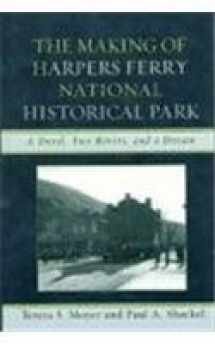
The Making of Harpers Ferry National Historical Park: A Devil, Two Rivers, and a Dream (American Association for State and Local History)
Book details
Summary
Description
Harpers Ferry National Historical Park is most widely known today for the attempted slave revolt led by John Brown in 1859, the nucleus for the interpretation of the current national park. Here, Moyer and Shackel tell the behind-the-scenes story of how this event was chosen and preserved for commemoration, providing lessons for federal, state, local and non-profit organizations who continually struggle over the dilemma about which past to present to the public. Professional and non-professional audiences alike will benefit from their important insights into how federal agencies interpret the past, and in turn shape public memory.


We would LOVE it if you could help us and other readers by reviewing the book
Book review



